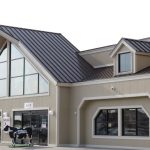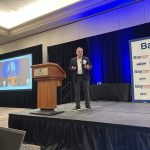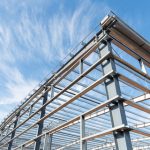If you’ve spent any time in the construction industry, you’ve no doubt seen a steady growth in the utilization of metal of all kinds in wall applications over the last couple of decades. It is clear that metal wall systems of all types have grown to where you just can’t ignore it. Within the pages of this magazine alone, have been numerous examples of projects both complex and simple supplied by an extensive list of manufacturers over many years. There have been many articles and blogs written to offer opinions on what reasons you can site to attribute to this growth.
Modern equipment is making metal more adaptable and flexible for architects’ unique designs and ideas

Metal is on the Trajectory
If the design concept begins with the architect, as most of us believe, then it is no wonder that metal is on this trajectory. Modern equipment makes metal more adaptable and flexible to the unique designs and ideas springing from the minds of these architects. It is not uncommon to see references to the work of Frank Gehry and his very recognizable and stylized use of metal as an example of the creativity that can be achieved with metal. Complex curves have been growing in popularity and can be achieved with metal as shown by his work.
But metal’s style can go from the complex to the simple as well. The pre-engineered metal building manufacturers have made good use of the simple wall panels used to clad their buildings and yet they have also included nearly all types of metal wall products in its offer to give their projects some added aesthetic appeal and style. The use of standing seam panels has also worked its way into wall construction and provides a nice clean look from a well-established product.
The aluminum composite material and rainscreen industries have become more dominant in modern design and we don’t see any slowdown in that market growth. With the increase in the use of creative perforations, the design opportunities seem endless. Add to that, the ever-growing insulated metal panel (IMP) business and you can see where the opportunities abound. It is often written that the IMP market is really just getting started in the states and that the European market is years ahead and offers a peek into the future here in America. More and more owners are looking at insulation R-values and the rapid construction techniques attributed to these panels. It would be wise as a contractor to keep these products on your radar.

Metal’s Benefits
So as a contractor, how does that help you? When dealing with the architect you have many reasons to promote metal. To start with, the choice of system will have a great deal of influence on the speed of construction, that can’t be overlooked. Its durability means the finished building will look the same for years to come. There is little maintenance required and it is not subject to cold weather install delays as many other materials are.
Of course, that is just the start, metal is chosen for many other reasons. It is strong, particularly those panels made of steel. It has long been said that steel is also the most recycled product in the world, which today is another desirable feature. But not just recyclable, but made with recycled material as well. It also lasts for a long time, so it is the definition a sustainable material. We know owners look at life cycle cost and metal always scores highly in that context. When incorporated with insulation as with IMPs, it can be the greenest product available. Of course, metal is noncombustible and lightweight which are two desired features as well, which should not be overlooked.
There are so many products and materials available to the architect, so the metal industry cannot become complacent, but the inherent benefits of metal give the industry a leg up in the competition for customers.
Bill Wade is director of architectural sales at McElroy Metal, Bossier City, La.; and Stephen Hendrickson is the director of design and engineering at Hitzfield Group, Indianapolis.






